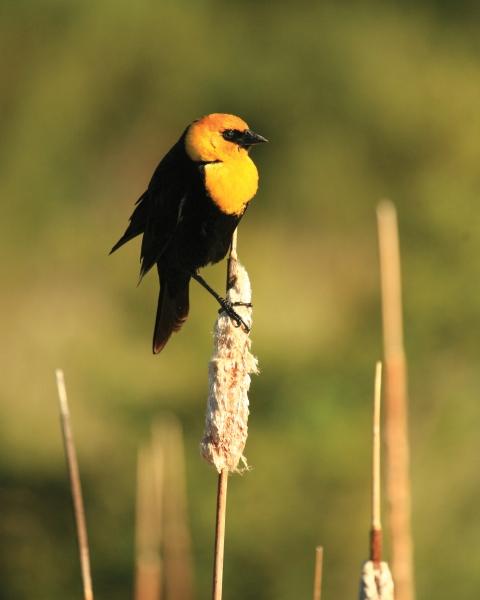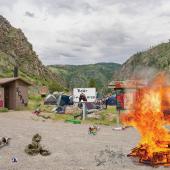Defenders of Wildlife
Walking through the Gallatin National Forest during a light snow in early spring, Mike Leahy scanned the ground for signs of elk. He hoped to find and follow a herd pushed into the mountains by an upscale housing development south of Bozeman. The houses stood on the hillside like hotels.
“Elk used to have access to the entire Gallatin Valley; they weren’t limited to chunks of farmland that haven’t been developed yet,” Leahy says, explaining that the large ungulates have access to plenty of mountain habitat, but not so much valley habitat—which they need for grazing in the winter and calving in the spring.
This conflict between migration and development is just one example Leahy could tell you about. Since 2000, he’s worked for the Defenders of Wildlife, a national nonprofit focused on science-based wildlife conservation. He is now the Rocky Mountain regional director and oversees the protection of imperiled animals in the Rocky Mountains and high plains, including wolves, grizzlies, wolverines, prairie dogs, bison, and others, all from his office in downtown Bozeman.
Founded in 1947, Defenders is headquartered in Washington, D.C. There are 12 offices throughout the U.S. and Mexico, including two in Montana. The organization championed the 1973 Endangered Species Act and their recent work includes supporting a reintroduction of genetically pure bison from Yellowstone National Park to the Fort Peck Indian Reservation in northeast Montana, home to the Sioux and Assiniboine tribes. Although a small commercial herd has existed on the reservation since 1999, genetically pure bison have been absent since 1872.
“It’s the first time pure bison have been restored to tribal land, so there’s huge cultural and ecological significance,” says Leahy. The Montana Fish Wildlife & Parks Commission approved the transfer in December of last year; around 60 bison arrived at Fort Peck in mid-March. The next step is to transfer half of these bison to the Fort Belknap Indian Reservation in north-central Montana. That and deal with a lawsuit by ranchers and property-rights groups, who have opposed the reintroduction from the beginning.
For Defenders and the tribes, the legal wrangling is worth it. “[The reintroduction] helps us reconnect a lot of our cultural ties with the buffalo, especially because they are genetically pure,” says Robert Magnan, director of the reservation’s fish and game department. “Historically, the buffalo provided us with everything we needed. They were a one-stop grocery store. They were food, we used their bones for tools and hide for clothing. That’s how much we depended on them. As a tribe, there’s a big void there.”
“[The Defenders] have been helpful to us for a very long time,” Magnan says. “They’ve helped with a few other wildlife projects before… The swift fox was another of Mother Nature’s creatures that we’re very attuned to and has been absent for over a hundred-some years. Now, we have them reintroduced onto the reservation.”
These kinds of projects aren’t easy, says Leahy, given the disparate attitudes that epitomize Montana. “We’ve got vegans and hunters sharing the same space,” he explains. “Consensus can be difficult.” Which is part of what makes Leahy the perfect man for the job. He drives a massive Ford truck that runs on veggie oil. He doesn’t eat meat unless he (or a friend) has hunted and killed it—which happens often. He practices both yoga and mixed martial arts. This unconventional, paradigm-busting personality allows him to communicate with many different kinds of people—most of which, he points out, have more in common than they realize. “Just about everybody is pro-wildlife,” he notes. “The hard part is agreeing on the sacrifices needed in order to protect it.”
In Montana, Defenders of Wildlife boasts about 4,000 supporters and members. Nationwide, that figure reaches nearly one million. In 2010, 77 percent of the group’s yearly revenue came from grants and contributions. Of its $34 million budget, about 92% funded programs and support services, while 8% went to fundraising, according to the organization’s 2010 report. Donors can earmark contributions, directing their money to certain conservation efforts.
“A lot of people just think of the Defenders for their work with wolves,” says Gary Tabor, director of the Center for Large Landscape Conservation. Although they were instrumental in the Yellowstone wolf-reintroduction effort 15 years ago, he explains, “they do much more than that. They are totally involved in other elements of wildlife conservation across the country.”
If you’re interested in learning more, making a donation, or participating in advocacy efforts, visit defenders.org.













